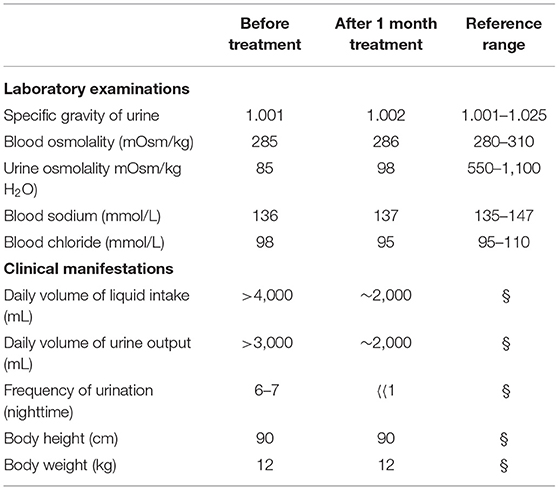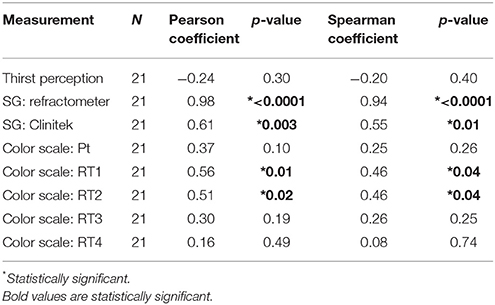
05), reflecting similar reporting for averages. No median differences were seen between the ☋x solution and the DIG and MAN at any temperature or for the HYD 5☌ ( P >. The measured median (interquartile range) USG value for the reference ☋x solution was 1.025 (1.020–1.030). All other results are presented in Table 3.

As indicated by color coding in Table 2, the misclassification of samples increased from 0 to 2 at 1.020 to 1 to 3 samples classified lower than the cutoff at 1.025 and 1.030 USG. At a higher cutoff value (ie, 1.025 or 1.030), a substantial number of measurements were classified below the cutoff for all tools.

The USG cutoffs (1.020, 1.025, and 1.030) represent commonly used cutoff values in the literature 5, 21 for hydration status (euhydration, dehydration, and severe dehydration, respectively). The measurements per reference solution are shown in Table 2. We compared the outcomes of the DIG, MAN, and HYD with the ☋x reference solutions. 22 Finally, we evaluated the diagnostic validities of the equipment by comparing the refractometers with the accepted USG reference value of ≤1.020 as the upper limit classification of euhydration, and accuracy was depicted in a contingency table for each measurement temperature against the set reference. An AUC of ≥0.90 is considered excellent 0.80 to 0.89, good and 0.70 to 0.79, fair when sensitivity and specificity are preferably >0.80. Additionally, we calculated receiver operating characteristics to assess the diagnostic capability of the DIG, MAN, and HYD for identifying high urine concentration (USG ≥1.020) based on the area under the curve (AUC) and sensitivity and specificity. 05 indicated significance for both analyses. The Bland-Altman analysis was used to determine mean estimation bias, direction, and 95% limits of agreement among refractometers with HYD as the standard. Spearman correlations (including 95% CIs based on the Fisher Z transformation) were conducted to determine the relationships between reference measurements (☋x) or the selected standard (DIG). As the HYD data were not distributed normally, we calculated the mean differences for all outcomes at different temperatures using Mann-Whitney U tests.

We performed separate analyses between all tools for the 2 experiments. We either measured all samples in duplicate and used the average for analysis when the measurements were not more than 0.005 apart or we measured the samples in triplicate, used the median for analysis when the difference between the first 2 measurements >0.005, and used the average of the 2 measurements for analysis. Before use, we calibrated both refractometers and the HYD using distilled water at 20☌.

Each urine sample was measured at 3 temperatures on the same day within an 8-hour period. During experiment 2, we used a warm-water bath at 20 ± 1☌ and 37 ± 1☌ and a Traceable Long-Stem Digital ULTRA thermometer with a resolution of 0.1☌ and accuracy of ☐.2☌. During experiment 1, we used an oven (model Heratherm OGS100 Thermo Fisher Scientific) and a Traceable Sentry Thermometer (Thermo Fisher Scientific) with a resolution of 1☌ and accuracy of ☑☌ to measure sample temperature. Measurements for both experiments were obtained in the following order: samples were cooled in the refrigerator (5☌) and then the closed samples were heated to 20☌ and to 37☌. For both experiments, the samples were prepared separately for measurement with the refractometers (2 × 15 mL in 45-mL transparent plastic freestanding centrifuge tubes Evergreen Scientifics) and HYD (1 × 45 mL in glass Erlenmeyer flasks Thermo Fisher Scientific).


 0 kommentar(er)
0 kommentar(er)
